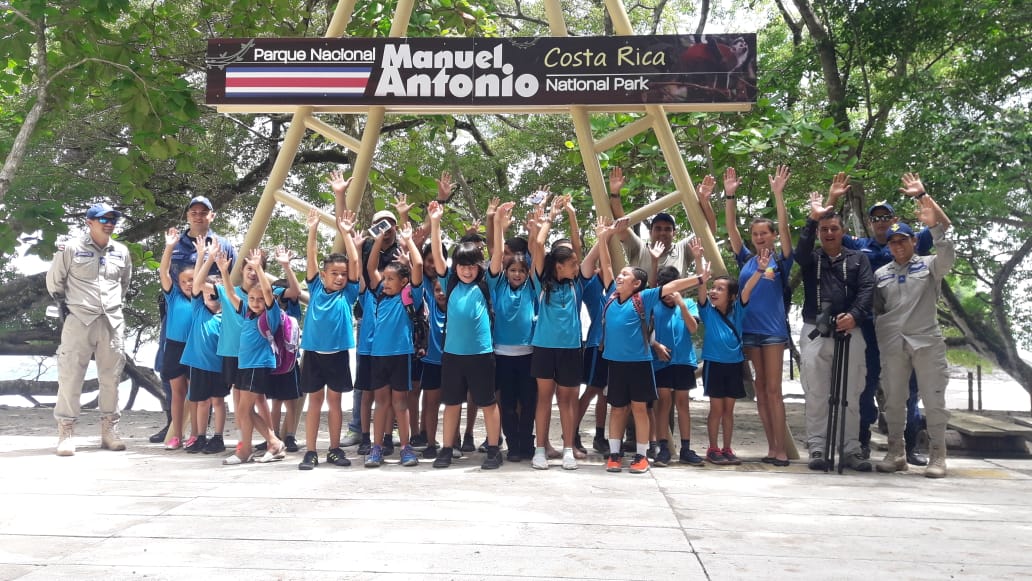A view of Conservation Projects in Costa Rica, and the role of coordination with international tools like Global Forest Watch
Among conservation leaders worldwide, Costa Rica is in the forefront.
Costa Rica’s protected wild areas account for over 25% of its land, and harbour magnificent wildlife and landscapes. Costa Rica has achieved several global firsts: being a global leader in eco-tourism and in implementing payments for ecosystem services to support conservation and reforestation actions, adding to the abolition of its army in 1949. Costa Rica now has also established the ambitious policy objective to be carbon neutral nationally by 2021.
These admirable successes must not mask the continuing pressure on land outside of protected areas, however, due to: conversion to agricultural land for oil palm plantation, continued urbanization and fragmentation of non-protected habitats, and demands for new infrastructure, jobs and industry. Recent analysis has also reported the growing emergency across the border and across Central America, Costa Rica’s northern neighbours, threatening the Mesoamerican corridor, of significant ‘narco-deforestation’. At the recent IV Mesoamerican Congress on Protected Areas in San José, Costa Rica, the Tropical Agricultural Research and Higher Education Center, Centro Agronómico Tropical y de Enseñanza (CATIE), highlighted the ongoing risks to ecosystems in 30% of Costa Rica’s protected areas, demonstrated by their recent work.
For all of these reasons, the importance of protecting land outside National Parks and other protected areas becomes ever more crucial, in this wider context, Costa Rica needs all of the tools at its disposal to tackle and reverse deforestation. New data sources, such as Global Forest Watch, for example, provides a new source of robust evidence, expanding the essential toolkit, to track changes in Costa Rica’s tree cover, and develop the evidence base for growing deforestation and threats to forests outside of protected land in Costa Rica.
For example, for the Titi Conservation Alliance, on the Central Pacific Coast of Costa Rica, on-the-ground knowledge confirms that the much increased tree cover as evidenced by Global Forest Watch, is oil-palm plantation, but the impact of Titi Conservation Alliance activities is also visible, having planted 55,000 trees, and supported a high degree of natural regeneration. The forest cover increase within the Rio Naranjo Biological Corridor is also detected.
Further analysis could therefore expand and underpin development of a robust land-use monitoring system to underpin advocacy initiatives and celebrate successes.Analysis of key data sources will provide robust evidence to support the work of Titi Conservation Alliance in multiple areas, such as:
- TCA’s indicators to focus, prioritize, and facilitate tropical lowland forest restoration for ecological connectivity and biodiversity conservation actions, including for establishment of agro-forestry systems alongside tenant farmers;
- providing the basis for carbon sequestration and storage assessment;
- refine existing land use mapping to evidence TCA’s reforestation success planting 50,000+ trees, and
- document land-use change histories, underpinning advocacy, public communications, awareness raising and empowering local people for future activities.
Analysis combining international, national Costa Rican data and ground-truthing, could also enable evidenced differentiation of RNBC land-use change (natural regeneration, reforestation, forest degradation, and oil-palm plantation), in preparation for official REDD+ verification.
The TCA aims to take the lead among biological corridors, contributing to national REDD-readiness policy development and set an example in successful Forest Landscape Restoration for NGOs across Costa Rica, Central America and beyond. This includescommunity development and enterprise for sustainable /alternative incomes for local small producers and artisans.
If you are interested in learning more about the work of the Titi Conservation Alliance, you can read more at:www.monotiti.org, or contact us with any queries at: info@monotiti.org.






